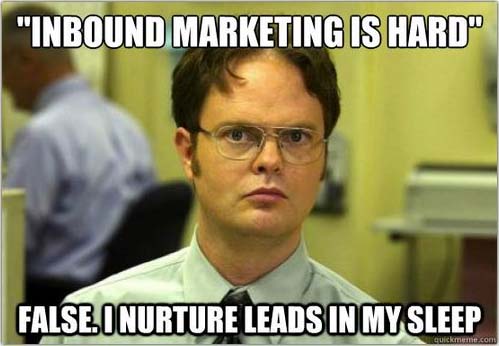
B2B Cold Calling: Unlocking Success in 7 Expert-Backed Practices
March 5, 2024
CRM Integration for B2B Telemarketing Success
March 6, 2024
The image displayed above is a snapshot from Google Trends, showcasing the emergence of the key phrase “Inbound Marketing” in 2007 and its consistent upward trajectory. Presently, it is a globally embraced strategy, gaining traction even in Japan. Anticipating significant growth in South-East Asia, particularly in Singapore, for the adoption of Inbound Marketing in 2015.
There has been a perception that South-East Asia tends to lag behind the United States in technological trends by approximately 10 years. At iSmart, we earnestly hope for a rapid uptake of Inbound Marketing in Singapore, recognizing its increasing relevance as outbound marketing diminishes in effectiveness. Despite a lack of awareness among local marketers regarding the latest digital marketing methodologies, the potential for Inbound Marketing is substantial, given Singapore’s status as the most connected country in the region, with nearly 100% broadband Internet penetration. Moreover, countries like Malaysia, Indonesia, and the Philippines boast a considerable Internet user base.
It falls upon us to advocate for the long-term advantages of Inbound Marketing. With the recent prominence of ECommerce, we are confident that Inbound Marketing will soon follow suit.
Singaporean marketers may question the distinctiveness of Inbound Marketing compared to digital marketing. When I first encountered the Inbound philosophy, I struggled to differentiate it from my earlier experiences in Internet marketing. However, the subtle distinctions exist. In fact, one might not realize that email marketing can be approached both as an outbound and an Inbound strategy.
For instance, when you send out a mass eDM hoping for clicks, that’s an outbound approach. Conversely, in Inbound Marketing, a visitor lands on your page, downloads an enticing ebook, and receives a series of scheduled emails over a few days to nurture their interest until they’re ready for sales—that’s Inbound.
In outbound, you initiate a marketing action, and prospects respond based on their choices. In Inbound, prospects express interest through top-of-the-funnel actions, and you subsequently engage with them.
Which approach is simpler? There’s no argument: Inbound is the preferred choice because it capitalizes on existing prospect interest—they come to you on their own initiative. There’s no hard selling even in the closing stage. Traditional business owners can relate to ‘Inbound’ moments, like receiving unexpected inquiries about products and services. Who wouldn’t want such leads without additional advertising costs? Inbound Marketing is said to reduce lead generation costs by 60%!
One of Inbound’s standout features, setting it apart from general digital marketing, is its follow-up process. Many Singaporean corporations may have scattered digital elements like an email database or a blog, but they often lack a comprehensive understanding of how these components can work together. Inbound Marketing, facilitated by HubSpot, the world’s top Inbound Marketing software, offers a holistic approach to converting a cold lead into a warm Marketing Qualified Lead (MQL) and, eventually, a customer. Throughout this process, the marketing execution is timely, saving both time and money.

Inbound goes beyond mere list building. Strategically positioned landing pages guide leads through the buyer’s journey, framing their problems and offering relevant solutions.
It transcends basic content marketing. Articles are not generic but sharply focused, tailored to the reader’s buyer persona and their position in the buyer’s journey.
Inbound is more than email marketing. Emails are crafted to be helpful, informative, and conversational. They are sent to appropriately segmented subscriber lists, fostering engagement and building closer relationships. The dialogue and nurturing process break down leads’ defenses, making them more open to later conversations with your sales team.
It’s not just about search engine optimization (SEO). Selected keywords form the foundation for creating remarkable content aimed at searchers first, then the search engines. This approach enhances understanding of your buyer personas’ queries.
Inbound isn’t solely about closing the sale. Neglecting customers after significant investments in acquisition is a grave mistake. Inbound customer service prioritizes building trust and lasting relationships. According to the White House Office Of Consumer Affairs, “It is 6 to 7 times more expensive to attract a new customer than to retain an existing one.” When customers become promoters, you gain powerful intangible benefits: social proof, marketing leverage, and competitive advantage.
It’s evident that Inbound demands a higher marketing school of thought to provide a comprehensive customer experience. Singaporean companies have historically led in business practices, and maintaining this position requires continuous updates to marketing strategies for business growth.
Inbound represents the next wave of marketing for maximizing growth potential. If you’re unsure how to start, don’t hesitate to call or email us or apply for a FREE website evaluation. We welcome challenges that contribute to mutual growth in knowledge and expertise in 2015 and beyond.


